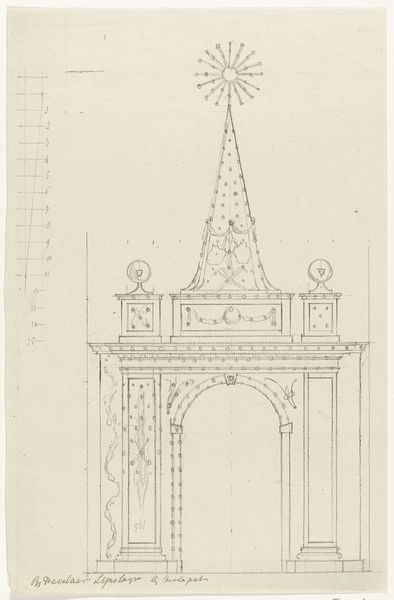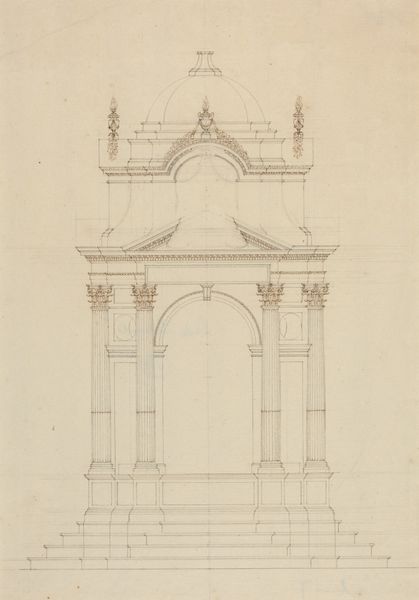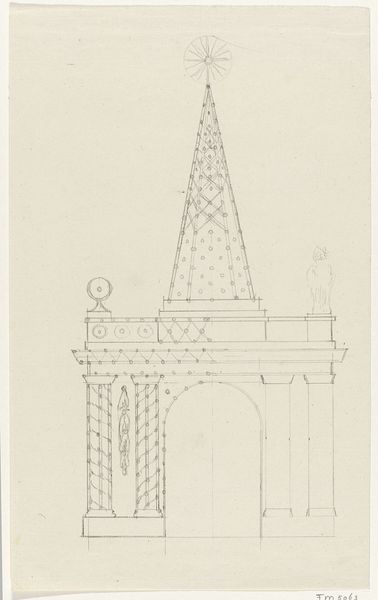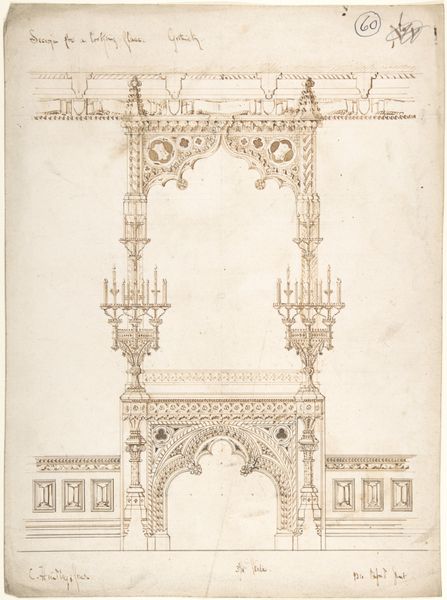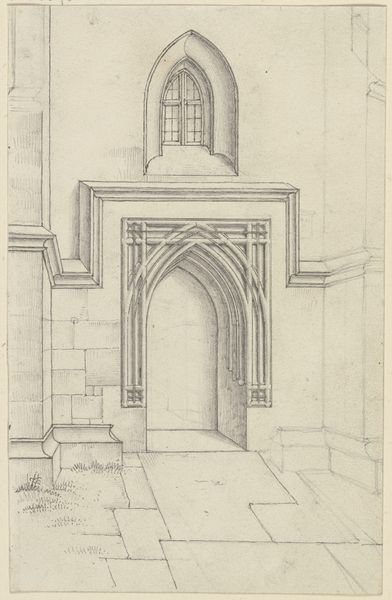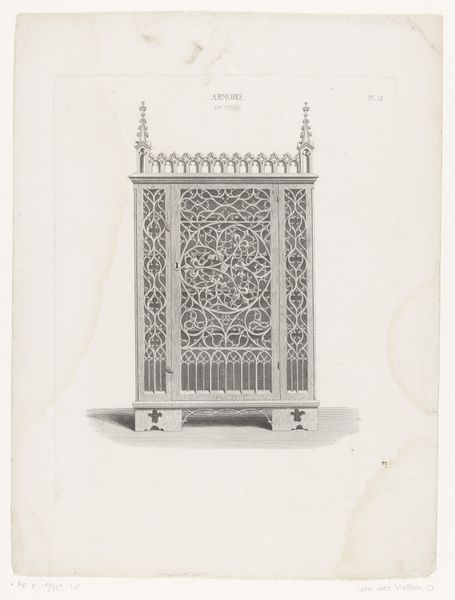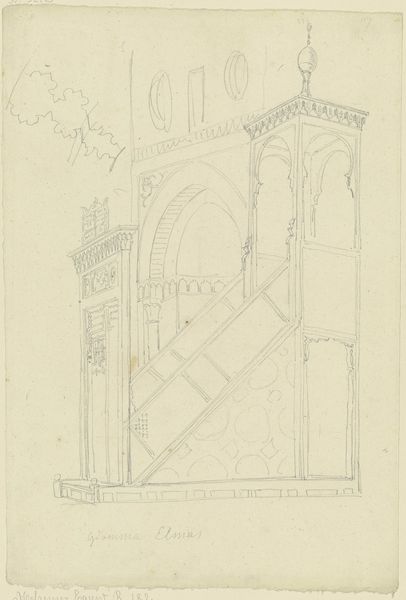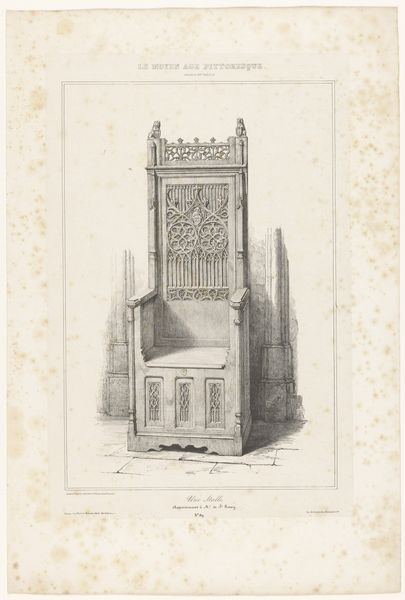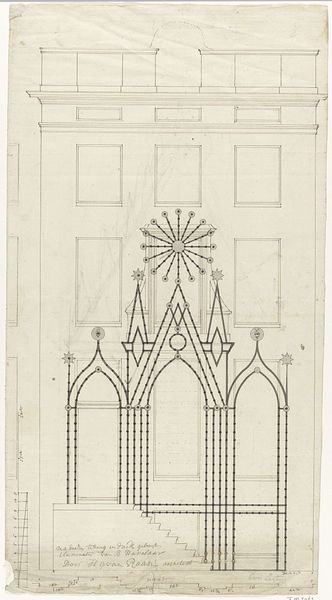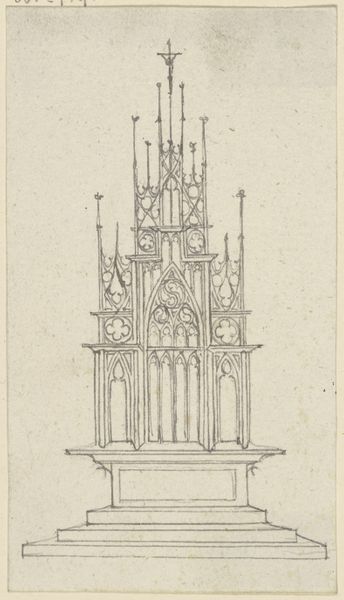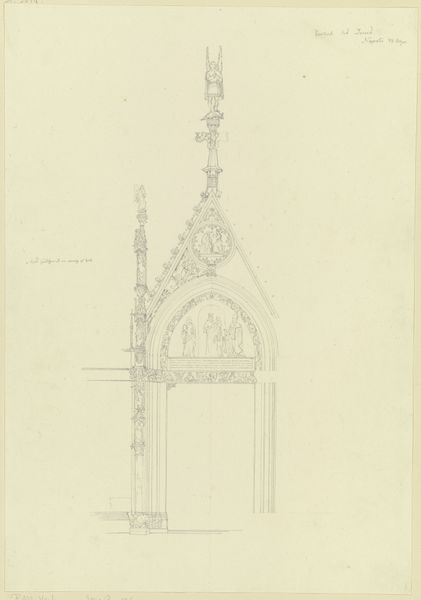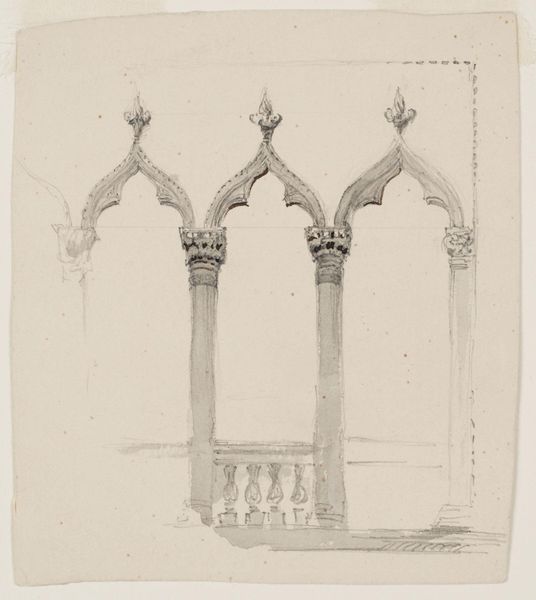
drawing, etching, paper, pencil, architecture
#
architectural sketch
#
drawing
#
neoclacissism
#
etching
#
etching
#
paper
#
pencil
#
architecture drawing
#
cityscape
#
architecture
Dimensions: height 311 mm, width 233 mm
Copyright: Rijks Museum: Open Domain
In this 1788 design for the illumination of a house in Amsterdam, Hendrik G. van Raan uses graphite to render architectural ornamentation, evoking a sense of poised anticipation. The symmetrical structure, defined by a central arched gateway flanked by ornate towers, is indicative of both classical and gothic influences. The overall impression is one of lightness, almost as if the structure is more conceptual than tangible. Van Raan’s design utilizes a semiotic interplay of vertical lines and rounded forms. The verticality of the towers suggests aspiration, while the archway provides an opening and an invitation. The repetition of small, circular elements along the edges of the structure creates a rhythm that guides the eye. These elements don’t just decorate; they contribute to a structured visual language, inviting us to decode the intended reception. Ultimately, the drawing prompts us to consider the interplay between public display and private space, using architectural form to negotiate social and aesthetic values. It's a space crafted not just from stone, but from the very language of design itself.
Comments
No comments
Be the first to comment and join the conversation on the ultimate creative platform.
